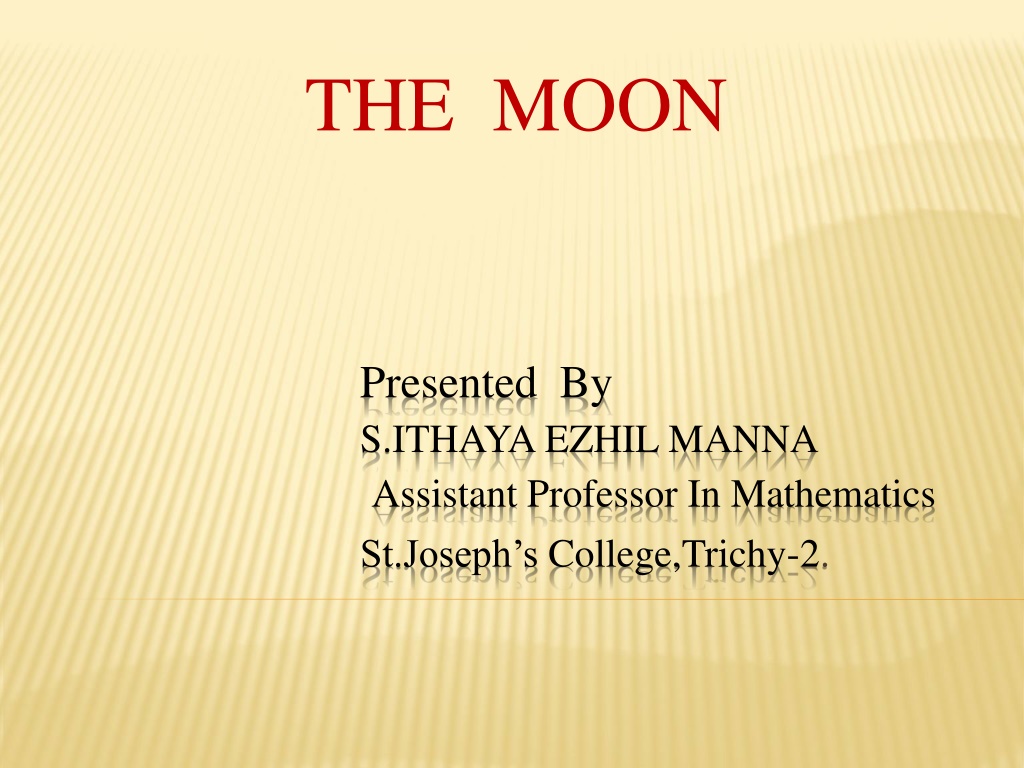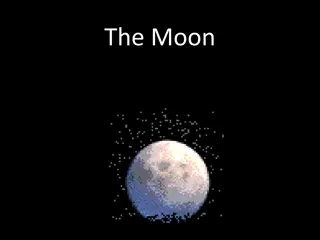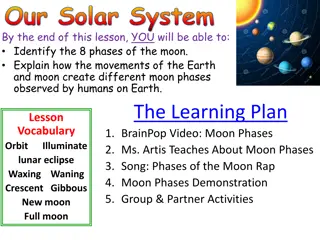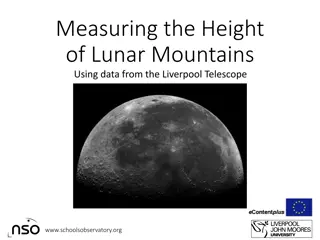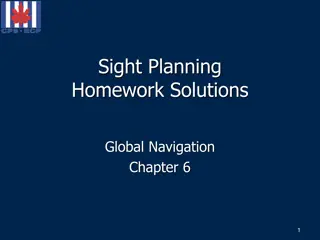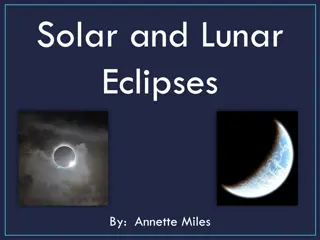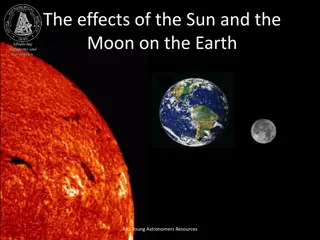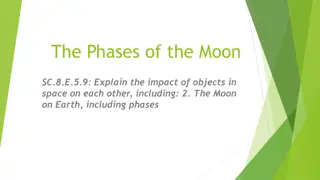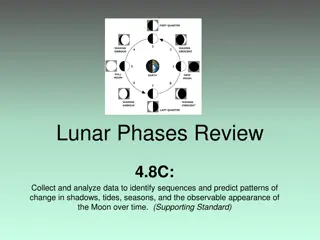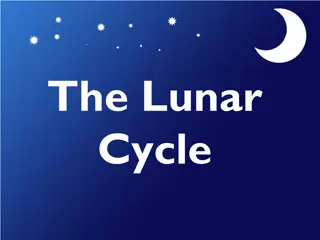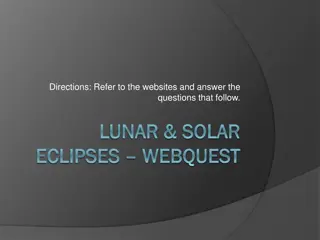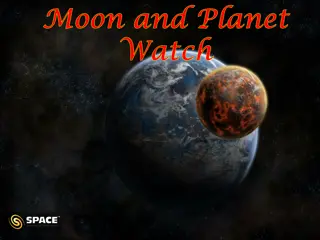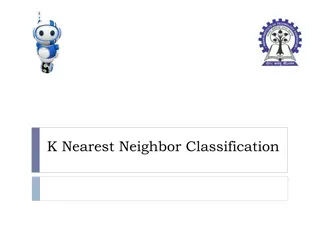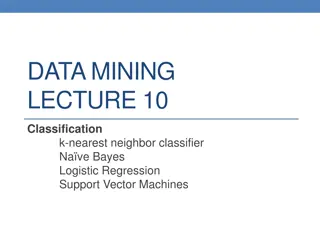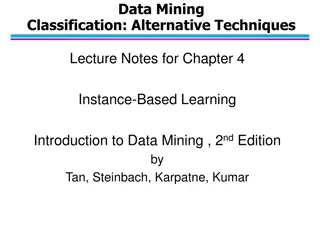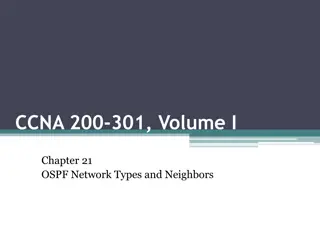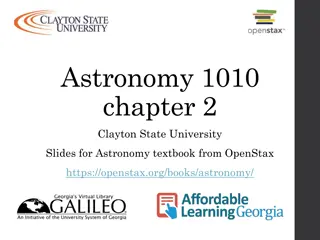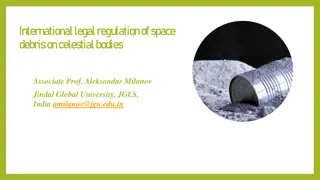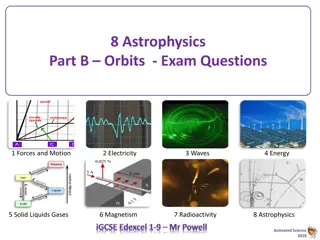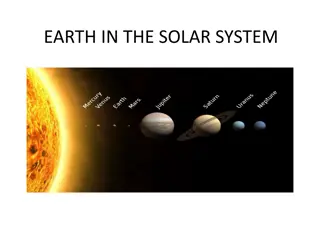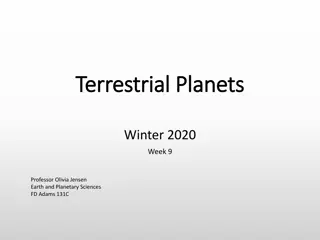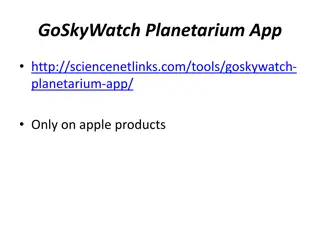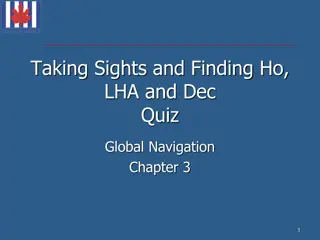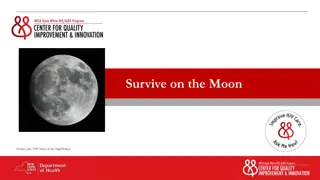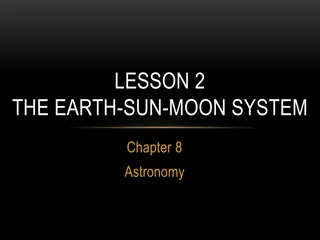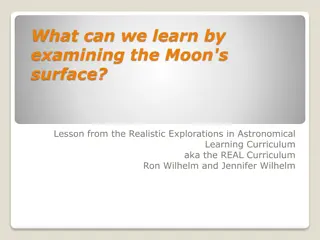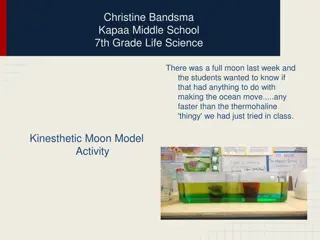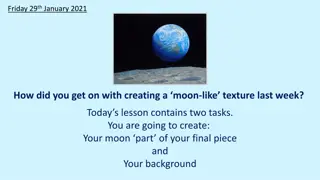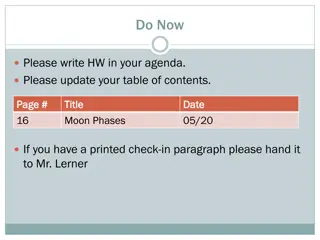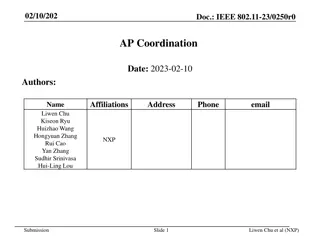The Moon: A Celestial Neighbor
The moon, Earth's closest celestial neighbor, orbits the Earth following Kepler's laws. With a distance of about 240,000 miles and a linear diameter of 2163 miles, the moon's mass is about 1/81 times that of Earth. Learn about the lunar orbit, nodes, and its relationship with synodic and sidereal months.
Download Presentation

Please find below an Image/Link to download the presentation.
The content on the website is provided AS IS for your information and personal use only. It may not be sold, licensed, or shared on other websites without obtaining consent from the author. Download presentation by click this link. If you encounter any issues during the download, it is possible that the publisher has removed the file from their server.
E N D
Presentation Transcript
THE MOON Presented By S.ITHAYA EZHIL MANNA Assistant Professor In Mathematics St.Joseph s College,Trichy-2.
INTRODUCTION The moon is at distance of about 2,40,000 miles (384403km) form the earth and as such it is the nearest celestial neighbour to the earth. The linear diameter of the moon is about 2163 miles (3476km) and its mass is about 1/81 times that of the earth, the angular diameter of the moon is about 30 and its mean horizontal parallax is about 57'. The moon is a satellite of the earth. It moves around the earth following the law of Kepler. 1. 2. 3.
INTRODUCTION 4. The lunar orbit is at an angle of about 5 degree and 8' to the ecliptic and its eccentricity is 1/81. 5.The two points of intersection of the lunar orbit and ecliptic are called the nodes of lunar orbit. 6. The point where the moon crosses the ecliptic in going north is called the ascending node and the other point where the moon crosses the ecliptic in going south is called the descending node.
INTRODUCTION 7. The line joining the nodes of the lunar orbit is called the nodal line and it is the line of intersection of the planes of the orbit of the moon and the ecliptic. 8. The moon is not a self-luminous body. It shines in the light it receives from the sun.
DEFINITIONS Sidereal month Sidereal month The sidereal month is the period of one complete revolution of the moon around the earth relative to any fixed star. It is about 27 1/3 days (27days, 7 hours, 43 minutes). Synodic Synodic Month Month The period of one complete revolution of the moon around the earth relative to the sun is called a synodic month. It is also called a lunar month or a lunation. It is about 29 1/2 days (29 days, 12 hours,44 minutes).
FIND THE RELATION BETWEEN SIDEREAL AND FIND THE RELATION BETWEEN SIDEREAL AND SYNODIC MONTHS MONTHS SYNODIC let S,L and Y be the number of days in a sidereal month, lunatio ( synodic month) and a year respectively. In S days the moon describes 360 around the earth with respect to any fixed star X. Therefore in one day the moon describes 360 /S with respect to the star X. Similarly in one day the sun describes 360 degree/Y with respect to the star X and the moon describes 360/L with respect to the sun. we get, 360/S = 360/Y + 360/L i.e. 1/S = 1/Y + 1/L
ELONGATION ELONGATION The elongation of moon at any instant is the difference between the longitudes of the sun and moon. It is saId to be east or west according as the moon is on the eastern or western side of the sun. Let E be the earth and S the position of the sun on the ecliptic. Let M be the position of moon in its orbit and M1 the foot of the perpendicular from it to the ecliptic. Elongation of moon = Longitude of moon - longitude of sun
If the inclination of the lunar orbit be neglected and the moon were taken in the ecliptic then the elongation of the moon is the angle subtended by sun and moon at the earth.
Conjuction Moon is said to be in conjunction with the sun when if it is seen from the earth in the same direction as the sun. At conjunction the elongation of moon is zero. Conjunction takes place on new moon days. Opposition Moon is said to be in opposition with the sun when it is seen from the earth in the direction opposite to that of the sun. All opposition the elongation of the moon is 180.Opposition takes place on full moon days.
Quadratures Quadratures The moon is said to be in a quadrature quadrature is side to be east or west according as the moon is on the eastern or western side of the sun. The eastern and western quadrature positions are also known as the first and third quarters respectively. quadrature if its elongation is 90. The
Daily motion of the moon Daily motion of the moon In a lunation of 29 1/2 days, the moon separates through 360 from the sun eastward relative to the earth. Therefore the average daily motion of the moon is about 12 .2 or about 30' per hour. The angular diameter of moon is also 30'. Therefore the moon moves through an aree equal to its angular diameter every hour.
